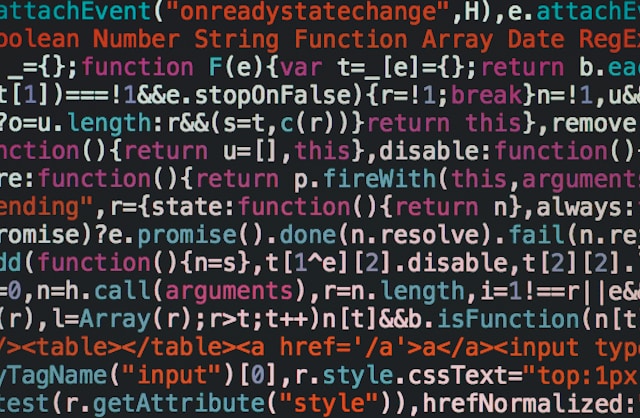Introduction
In today’s rapidly evolving healthcare landscape, the emphasis on patient-centered care has never been more pronounced. Central to this transformation is the Fast Healthcare Interoperability Resources (FHIR) standard, developed by Health Level Seven International (HL7). FHIR is designed to facilitate seamless data exchange between healthcare systems, thereby enhancing patient engagement, improving care coordination, and promoting interoperability. With the increasing adoption of digital health technologies, FHIR is emerging as a vital tool in bridging gaps in patient care, ensuring timely access to health records, and empowering individuals to take control of their health.
To fully leverage the power of FHIR, organizations need a robust and scalable FHIR server to store, manage, and exchange healthcare data efficiently. Kodjin FHIR Server provides a high-performance solution designed to meet the interoperability demands of modern healthcare, enabling seamless integration with existing systems while ensuring compliance with FHIR standards.
Understanding FHIR
FHIR is a standard that defines data formats and elements, known as “resources,” and an application programming interface (API) for exchanging electronic health records (EHR). It builds upon previous HL7 standards but distinguishes itself by utilizing modern web technologies, making it more accessible and easier to implement. The primary goal of FHIR is to enable interoperability between disparate healthcare systems, ensuring that vital patient information is readily available when and where it is needed.
Key Features of FHIR
- Modular and Flexible: FHIR uses modular components called resources that can be easily extended or customized to fit various use cases.
- RESTful API Architecture: FHIR leverages web-based RESTful APIs, making integration with existing systems straightforward.
- Support for Multiple Data Formats: Data can be exchanged in XML or JSON formats, ensuring broad compatibility.
- Interoperability: Designed to work across different healthcare systems, FHIR promotes seamless data exchange.
- Security and Compliance: Built-in support for OAuth2 and SMART on FHIR ensures secure authentication and data sharing.
The Role of FHIR in Patient-Centered Care
Patient-centered care focuses on respecting and responding to individual patient preferences, needs, and values. FHIR supports this approach by providing patients with access to their own health information, thereby empowering them to take a more active role in managing their healthcare. Patients can use FHIR-based applications to access their medical records, lab results, and other health data, fostering greater engagement and informed decision-making.
Benefits of FHIR in Patient-Centered Care
- Improved Patient Engagement: Patients can access and manage their health data through secure apps.
- Enhanced Care Coordination: FHIR enables providers to exchange data efficiently, reducing errors and redundancies.
- Better Outcomes: Access to comprehensive health data allows for personalized and informed treatment plans.
Key Applications of FHIR in Patient-Centered Care
1. Enhanced Patient Access to Health Information
FHIR enables the development of applications that allow patients to easily access their health records. By using FHIR-based apps, patients can view their medical history, lab results, and other pertinent health information in real-time, promoting transparency and patient empowerment. This functionality aligns with regulatory requirements such as the 21st Century Cures Act, which mandates patient access to their own health data.
2. Streamlined Care Coordination
Effective care coordination among healthcare providers is crucial for delivering high-quality patient-centered care. FHIR facilitates the seamless exchange of patient information between primary care providers and specialists, ensuring that all members of a patient’s care team have access to the most up-to-date information. This streamlined communication reduces redundancies and minimizes the risk of errors.
3. Integration of Social Determinants of Health (SDOH)
Recognizing the impact of social determinants on health outcomes, FHIR supports the integration of social care data into patient records. This holistic view enables healthcare providers to address factors such as housing, nutrition, and transportation, leading to more comprehensive and personalized care plans. By incorporating SDOH data, providers can proactively address potential barriers to health and well-being.
4. Development of Personalized Health Applications
FHIR’s standardized approach allows developers to create personalized health applications tailored to individual patient needs. These apps can provide:
- Medication reminders to enhance adherence.
- Chronic disease management tools for tracking conditions like diabetes and hypertension.
- Wellness tracking features for monitoring exercise, diet, and mental health.
5. Support for Clinical Research
FHIR facilitates the collection and sharing of standardized health data, which is invaluable for clinical research. By aggregating de-identified patient data, researchers can gain insights into disease patterns, treatment efficacy, and population health trends, ultimately contributing to evidence-based care improvements. This standardized data sharing accelerates the development of new treatments and medical advancements.
6. Improved Interoperability Between Systems
One of FHIR’s primary strengths is its ability to promote interoperability between diverse healthcare systems. By adhering to FHIR standards, different EHR systems can communicate effectively, ensuring that patient data is consistent and accessible across various platforms. This interoperability is essential for providing coordinated and efficient patient-centered care.
7. Real-Time Data Sharing
FHIR supports real-time data sharing, allowing healthcare providers to access and update patient information instantly. This capability is particularly beneficial in emergency situations, where timely access to accurate patient data can significantly impact outcomes. Real-time data sharing also enhances chronic disease management by enabling continuous monitoring and timely interventions.
8. Telehealth and Remote Monitoring
FHIR plays a critical role in expanding the capabilities of telehealth services. With increasing adoption of remote healthcare solutions, FHIR enables seamless integration between telehealth platforms and EHR systems. This integration ensures that virtual consultations are informed by real-time patient data, improving diagnosis and treatment recommendations.
Challenges and Considerations
While FHIR offers numerous benefits, its implementation is not without challenges:
1. Data Privacy and Security
Ensuring the confidentiality and integrity of patient data is paramount. Organizations must implement robust security measures, including encryption and access controls, to protect against unauthorized access and breaches.
2. Standardization Across Systems
Achieving uniform adoption of FHIR standards across various healthcare systems can be challenging, requiring collaboration and consensus among stakeholders. Variability in implementation can lead to inconsistencies in data exchange.
3. Resource Allocation
Implementing FHIR may require significant investment in technology and training, which can be a barrier for some organizations. Healthcare providers must allocate resources effectively to support FHIR adoption.
4. Compliance with Regulations
FHIR implementations must align with regulatory frameworks such as HIPAA in the U.S. and GDPR in Europe. Ensuring compliance while maintaining usability is a key challenge for developers and healthcare providers.
Conclusion
FHIR represents a significant advancement in the pursuit of patient-centered care. By enabling seamless data exchange, enhancing patient access to information, and supporting personalized care applications, FHIR empowers patients and providers alike. As healthcare continues to evolve, the adoption of FHIR standards will be instrumental in delivering coordinated, efficient, and patient-focused care. With ongoing advancements and regulatory support, FHIR is set to become the foundation of a truly interoperable and patient-centric healthcare ecosystem.
Frequently Asked Questions (FAQs)
1. What is FHIR?
FHIR (Fast Healthcare Interoperability Resources) is a standard developed by HL7 for exchanging electronic health records. It defines data formats and an API for seamless data exchange between healthcare systems.
2. How does FHIR enhance patient-centered care?
FHIR enhances patient-centered care by providing patients with access to their health information, facilitating care coordination among providers, and supporting the development of personalized health applications.
3. What are some challenges in implementing FHIR?
Challenges in implementing FHIR include ensuring data privacy and security, achieving standardization across diverse healthcare systems, and allocating necessary resources for technology and training.
4. How does FHIR support clinical research?
FHIR supports clinical research by facilitating the collection and sharing of standardized health data, enabling researchers to gain insights into disease patterns and treatment efficacy.
5. What role does FHIR play in telehealth?
FHIR enhances telehealth by enabling seamless data exchange between virtual care platforms and EHR systems, ensuring that healthcare providers have real-time access to patient information during remote consultations.
By embracing FHIR, the healthcare industry is taking a significant step toward a more connected and patient-centric future.
References
- HL7 FHIR Official Website: https://www.hl7.org/fhir/
- Office of the National Coordinator for Health IT (ONC) – FHIR and Interoperability: https://www.healthit.gov/
- 21st Century Cures Act Final Rule: https://www.healthit.gov/curesrule





